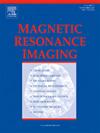定量扩散MRI示踪和微观结构对各向异性空间采样的敏感性。
IF 2
4区 医学
Q2 RADIOLOGY, NUCLEAR MEDICINE & MEDICAL IMAGING
引用次数: 0
摘要
目的:弥散加权MRI (Diffusion weighted MRI, dMRI)及其神经结构模型提供了对人脑组织和白质变化的深入了解。麦克马斯特等人最近的一项研究表明,连接体的复杂图形测量(图的图形表示)随空间采样变化而变化,但各向异性体素在此过程中引入的偏差尚未得到很好的表征。本研究通过显微结构测量(分数各向异性和平均扩散率)和白质束特性(束体积、长度和表面积)来进一步了解各向异性体素对微结构和束束成像的影响。方法:采用Wilcoxon sign - rank检验,将来自人类连接组项目-年轻人数据集扫描/重新扫描数据的44名受试者在不同空间分辨率下的三个白质束进行比较,以评估从dMRI数据中获得的选定测量的统计显著性。原始各向同性分辨率(1.25 mm各向同性)以6个各向异性分辨率(z维增量为0.25 mm)进行探索。然后,所有生成的分辨率上采样到1.25 mm各向同性和1 mm各向同性。结果:各分辨率下至少一项显微结构测量与一项束测量差异有统计学意义(p≤0.05,经多次比较校正)。Cohen’s d系数评估了各向异性体素对微观结构和示踪学的影响大小。结论:采用本研究选择的方法,用金标准数据对低质量数据进行基本上采样,不能恢复分数各向异性和平均扩散率。然而,当体素被重新采样到1 mm各向同性时,我们所选择的感兴趣区域的束测量变得更加可重复。本文章由计算机程序翻译,如有差异,请以英文原文为准。
Sensitivity of quantitative diffusion MRI tractography and microstructure to anisotropic spatial sampling
Purpose
Diffusion weighted MRI (dMRI) and its models of neural structure provide insight into human brain organization and variations in white matter. A recent study by McMaster, et al. showed that complex graph measures of the connectome, the graphical representation of a tractogram, vary with spatial sampling changes, but biases introduced by anisotropic voxels in the process have not been well characterized. This study uses microstructural measures (fractional anisotropy and mean diffusivity) and white matter bundle properties (bundle volume, length, and surface area) to further understand the effect of anisotropic voxels on microstructure and tractography.
Methods
The statistical significance of the selected measures derived from dMRI data were assessed by comparing three white matter bundles at different spatial resolutions with 44 subjects from the Human Connectome Project – Young Adult dataset scan/rescan data using the Wilcoxon Signed-Rank test. The original isotropic resolution (1.25 mm isotropic) was explored with 6 anisotropic resolutions with 0.25 mm incremental steps in the z dimension. Then, all generated resolutions were upsampled to 1.25 mm isotropic and 1 mm isotropic.
Results
There were statistically significant differences between at least one microstructural and one bundle measure at every resolution (, corrected for multiple comparisons). Cohen's coefficient evaluated the effect size of anisotropic voxels on microstructure and tractography.
Conclusion
Fractional anisotropy and mean diffusivity cannot be recovered with basic up-sampling from low quality data with gold-standard data with the methods selected for this study. However, the bundle measures across our selected regions of interest become more repeatable when voxels are resampled to 1 mm isotropic.
求助全文
通过发布文献求助,成功后即可免费获取论文全文。
去求助
来源期刊

Magnetic resonance imaging
医学-核医学
CiteScore
4.70
自引率
4.00%
发文量
194
审稿时长
83 days
期刊介绍:
Magnetic Resonance Imaging (MRI) is the first international multidisciplinary journal encompassing physical, life, and clinical science investigations as they relate to the development and use of magnetic resonance imaging. MRI is dedicated to both basic research, technological innovation and applications, providing a single forum for communication among radiologists, physicists, chemists, biochemists, biologists, engineers, internists, pathologists, physiologists, computer scientists, and mathematicians.
 求助内容:
求助内容: 应助结果提醒方式:
应助结果提醒方式:


